Dear-oh-dear, it’s autumn again! From last month’s unusual foray into the early years of rock-n-roll cruising on the ‘Daff’, this month’s edition sits on more familiar ground. I’m going to start this month’s little featurette, with news from two readers on opposite sides of Canada. They are John Tarvin of Vancouver and Royce Emery, who lives by Niagara Falls. The boat scene on the west and east coasts seem to be quite similar to me, although from the way the guys out there sometimes talk, you’d think they lived in different worlds and not the same country! The winter climate is quite a lot milder in the west of course and John says ‘That in some years boating is possible all year, though they do get quite a bit of rain’. You could not say the same of Toronto or Montreal in the east of course. |
|
From Canada, East v West!Indeed, this is not the case where winter temperatures routinely touch minus 20c and snow lying from late October through into April can be quite normal. There can be quite large climatic swings within a few miles as well. The Niagara area, where Royce lives, being good for agriculture and fruit growing and I’ve even seen peach orchards, while not that far away it’s just turf, potatoes and corn-on-the-cob that’s grown. It’s not for me I must confess, fellow vintage fans. I have friends living not that far (in Canadian terms) from Royce in what’s known as the ‘snow belt’ and have been with them in October when the locally thin and sandy soil is already frozen hard with winter rapidly approaching and it’s not a time of year you’d think about going boating I can tell you, or indeed contemplate gardening! Winter sports more like, if that’s your scene! Royce is a committee member of the Great Lakes Model Boat Association, which is a bit like the MPBA, but is a group of clubs limited to the lakes region. Royce tells me he owns a Peatol (aka. ‘Taig’ in Canada) lathe which he uses to make small fittings like stanchions and portholes for the Dunkirk little ships he loves to model. In fact, Royce is especially interested in Dunkirk little ships and was seeking information on a veteran recently rebuilt here in Essex, named ‘Endeavour’. She is a simple open fishing boat of the type that pulled so many men off those lethal beaches, back in 1940. From the other side of Canada, reader John Tarvin wrote to me about classic English diesels as beloved by your author. The Taplin Twin and E.D. Sea Otter attracted his attention from my pages in particular. John corrected a small slip in my features this last June and July, telling me that the shop he founded near Vancouver, Burnaby Hobbies (pictured), is in fact now run by his son, David. His elder son Nigel, builds and flies large model aircraft whilst working on full-size helicopters for a living. John tells me that he has a kit for ‘Danny Boy’ that he obtained in February last year. Not yet started when this was written, but I expect it’s well and truly underway now. As in our country nowadays, he says ‘It’s not easy to find a pond where i.c. boats may still be run’, though over on the East coast I did witness one very well run meeting at Wellesley Township in Ontario province, where fast r/c hydros. were on the water. I noticed no complaints from nearby residents. In fact, many came out to watch the racing, even though the weather was more than a bit unpleasant. By that readers, I mean I’d never seen rain quite like that in my entire life. Everything over there seems on the big side, even the raindrops! |
|
I’m using just a few of a large batch of super pictures sent in by John as illustrations this month and I’m going to hope that our Editor softens his heart to allow at least one or two of them to appear, for although they are not of boats, the modelling and hand carving in basswood is superb. John has a good eye for the attractive in historic aircraft I must say. The Westland Widgeon, Luton Minor, Vickers Wellesley and ‘Vedette’ flying boat. Thinking about it, there is a boat pictured here after all! These are superb little models that are worthy of the ‘MEE’ any year. Our reader’s eye for a pretty prototype has passed on to his sons. That huge Italian ‘Savio’ WWII Trimotor bomber is a truly lovely piece of work from Nigel Tarvin. On reflection, I think we should feel just as sorry for unlucky WWII Italian bomber crews as for our own airmen, for by the standards of 1940-41, these tri-motor medium bombers were no more satisfactory as combat aircraft than were our own ‘Battle’ and ‘Blenheim’ planes. The latter is known as the Bolinbroke or ‘Boly.’, in Canada, where one is being slowly restored at an aviation museum in Hamilton, Ontario. Pretty, yes, but easy meat for a well flown fighter, I should think. Finally, I can’t tell you how nice it is to see such top class balsa bashing skills survive in the younger generation - absolutely terrific. The Canadian Warbirds museum is well worth a visit, if you are in the area. You could eat your lunch off their hanger floor and that’s no lie. So visit www.warplane.com and have a look at their flying Lancaster and Lysander planes, if nothing else. Better still, raid the piggy bank and get a flight to Toronto. They have flying days I’m told and details will be on the website, I’m sure. We travel to NorfolkSome of the nicest things that can result from writing a magazine column for a long time, are the friends and contacts one makes. Many of these folk, one never gets to actually meet, but one of them with whom I did manage a one off face to face meeting, is Lez Brambley from Dereham. He has made many contributions to Collectors Corner. Lez, a retired RAF man with model flying as well as boating interests (this piece does seem to be getting an aviation feel about it doesn’t it?), writes to me now and then. In April last year he wrote and I quote, ‘I am having a bit of a turn out of plans and I seem to remember you writing that you had been asked for a plan of the Aerokits old ‘Sea Rover’. As it looks as though I shall never build one now, I would like to donate it to you.’ On a different note altogether, Lez continued ‘Reference your recent writings about the New Zealander Ian Verrall. Whilst on a holiday to N.Z. in 2004, our coach went through his home town, Waihi, on route to Auckland. Waihi is situated on North Island facing onto the Bay of Plenty’. As CC regulars may recall, the Sea Rover was my first boat after giving up on aircraft back in 1963 and I will always have a soft spot for this practical little craft, so I’m featuring a part page from a KeilKraft handbook c1970 and a section of Lez’s plan here. To build and sail a vintage Sea RoverAt first, I put away the plan that Lez sent me, but a day or two later I could not resist unfolding the big sheet of paper to see exactly what I had spent the best part of a weeks wages on, back in 1963. My recollections are that the kit cost me about 55 shillings back in 1963 and I note from the KeilKraft 1970 handbook, that its price had then rocketed to about £8. I think we may assume that as a 16 year old, I was perhaps a bit gullible taking in such an optimistic sales pitch as ‘A typical cabin cruiser as used for deep sea/big game fishing’ and ‘Ideal for radio control’. The latter in particular was misleading back in 1963, but somehow and with a few modifications, I managed to wedge my first home made single valve/single channel/clockwork escapement radio set and its mass of dry batteries into the hull with an ex-government electric motor and even bigger torch batteries to power it. There was not a spare half inch left, or even a millimetre! So, ’ideal’ it was not, but I managed, as no doubt did many other r/c experimenters operating on a tight budget like me. Even the few extra shillings needed to buy the next size up ‘Sea Commander’ was just too much to find on a school leavers pay and my ‘Sea Rover’ purchase provoked a row as my parents felt I was overspending and being wasteful on such a low wage. They were of course perfectly correct, but I was forgiven when they saw it twisting and turning as if by magic on the pond, and one doesn’t understand budgeting at the age of 15 anyway! With modern radio control, even with the biggest of servos, you’ll have no problem getting radio into a Sea Rover of course, but back in the dear old 1960’s, a novice R/C man would have been much better off with the extra room in an Aerokits Sea Commander, a Veron Marlin, a Maycraft Mercury or a HMM Wavemaster. All of these were longer by only about four or five inches, but all more roomy and expensive than a Sea Rover. Some, I knew back then would consider nothing smaller than a 48ins Sea Queen for radio control, but then those guys had the money needed for the Gannet or a Double Supermarine to drive it. One of these monsters required the ‘millionaire’s row’ priced commercial radios to go with it. These were beyond my means and for many others obliged to make everything for themselves. On a practical and I hope helpful note, I feel I should like to caution interested readers that they may (in my opinion), be a bit hard pushed to build a Sea Rover from the plan alone, as there are no bulkheads drawn on it. It would take a bit of head scratching to measure these off the drawing and make templates. As ply bulkheads were of course supplied ready cut in all his kits this is no criticism of designer Les’ Rowell’s drawings, or indeed of Aerokits as a manufacturer. As I happen to own a complete kit for a Sea Commander, I can’t see me ever bothering to do all this work for a Sea Rover, nostalgia or not, but you never know! One more spot of advice - never start measuring and cutting components off an old or photocopied model plan, without checking that it really is full-size. There are dozens of reasons, including age and shrinkage, inaccuracy, etc. On their plan, Aerokits specify any diesel of between 1.5cc and 2.5cc (or an electric motor), for this 29 1/2ins medium sized hard chine planing hull. Thinking vintage, I would say that something like a 1.49cc Fury, Super-Fury or Hornet diesel from E.D. would be ideal, with the larger capacity E.D. Racer maybe offering just a touch too much power. A medium size electric motor like a Taycol Standard, would do nicely for a slow, non planing hull, running on 12 Volts. If you fancy building or renovating one of these handsome little boats, then I wish you nothing but the very best. I had a lot of joy with my 55 shillings worth many times over when young. It lasted me through many years and just about every type of homebuilt radio as I progressed bit by bit to full reed ‘multi’ RCS-6 Transmitter and a homebuilt receiver built to Geoff Chapman’s Remcon circuit design. By the time I had built a RCM&E digital system, or purchased a Flight Link Control Series One analogue set, my first feedback proportional radio equipment, I was on to better and faster things and this, my first boat, was long broken up. On the BroadsA full-size version of the Sea Rover would be terrific fun don’t you think? When younger, I often wondered if Aerokits cabin cruisers were based on a real boat or if anyone ever ‘scaled-up’ an Aerokit to full-size? Now, I think that either possibility was most unlikely. Being on the Broads, I’m sure they were all just made up by Les’ from the general features of Blakes or Hoseasons hire boats, seen thereabouts. Even the near scale RAF Crash Tender, PT Boat and later the Swordsman, are let’s face it only 'semi-scale'. They were good fun though, quite fast, if i.c. powered and terrifically easy to build for anyone with basic woodworking skills. I learnt my skills from a really good carpentry teacher at school (Mr. ‘stop planing against the grain’ Lefever - now sadly long passed away) and from watching my dad doing house repairs. As I might have bragged before (sorry!), I once had a Sea Commander kit built and running over a bank holiday weekend. I couldn’t and wouldn’t do that sort of thing now that I’m older and wiser (maybe). As to scaling models up to full-size, I remember the designer Phil’ Smith telling me once, that his popular Marlin r/c design for Veron, was based on a full size Brooke Marine boat and that in turn his plan for the Marlin was scaled up and turned into a full size craft abroad, so weird things do happen! Reader Lez Brambley sent me a modern Lesro catalogue (www.lesromodels.co.uk, or telephone no.01202-476902) early last year and I was interested to see that most of the Aerokits plans are still available from them, but don’t forget what I said about the lack of bulkhead detail. Lez’ makes light of this saying, ‘You can build from these old plans Dave if you go to the trouble of drawing your own bulkheads as I have done with my Lesro Arrow (pictured)’. Well, rather you than me Lez’ and what a cracking job you’ve made of it, really super and all wood too. A real boat in miniature and a reminder of how things were 30 to 50 years ago. |
|
And bigger fry at OrpingtonThe next reader who wrote in, had bigger fry altogether to discuss than a little Sea Rover. ‘In his April 2006 column’ penned reader Lester Fastier, ‘Dave Wiggins sets out detail from the July 1948 issue of ‘Model Ships and Power Boats’ magazine and mentions a model of HMS Hood. My late Father built a model of the Hood in the mid 1940’s. It was made from dried milk cans!’ ‘At the time of construction I was six or seven years old and clearly remember helping him build it. Our ship was run many times on the Round Pond, Kensington, at Bournville and at other venues. It was a straight runner of course and steam powered’. The article also mentions Ted Vanner and I can remember my parents mention him many times. The model I describe has survived and being a modeller myself, I have restored and sailed her with electric power and radio control on the pond at Riverside Gardens, Orpington’. Mr. Fastier sent me a picture of his father’s battlecruiser and I must say it looks good for such an old tinplate ship and could well be the boat featured in the magazine. So, well done Lester, surely your dad would be pleased? And collectables from up NorthReader Mike Britnell from Blackburn, Lancs. is an avid reader and collector of vintage goodies. He provides our main feature in a month or two, but I thought I’d share with you one or two nice pictures he sent me in May last year. I’m going to begin with a super on the water shot of a perfectly lovely Sterling ChrisCraft Corvette sailing at Fleetwood. A model that currently has triple MFA 850 type electric motors. ‘Very nippy’, says our reader and it looks it too. The Corvette was if I recall correctly, a rather expensive top end imported kit, handled by Ripmax and a very nice thing it was too, but a bit out of Dave’s class though, so you’re a lucky old lad, Mike! Next up and equally classy, is Mike’s 15cc Gannet OHV, though this actually belongs to his friend Tim Fell, whose Father was a Keighley club member and ran it years ago in a Huntsman deep vee hull, with club number KY8 - oddly, my own club number is SO8! The engine appeared in good condition and Mike said it turned over ok. I would just like to caution that the big metal lubricator tank is not the correct Gannet item. Theirs was made in Perspex and much smaller. It was very common practice among Gannet owners to make and fit bigger oilers, as radio boating developed to demand longer running times than the few minutes needed for r/c steering, or straight running. So, this is no big surprise or a problem, unless you are a true collector looking for complete originality. I was asked to advise on the testing and restoration of the engine, but you just cannot do that sort of thing over the phone and Mike found himself a former RR car engineer to take on the job locally. Indeed, within a few days our reader phoned to say that the engine had been stripped, test run and was ready to go back in the boat which I must say I found a bit surprising. I had a brief chat with Mike’s restorer and he told me, that like myself, he had given up on the magneto and wired the engine for coil ignition using a Lucas coil. We managed to go a stage further with our batch of engines, rewiring our ‘maggie’ (magneto) engines to retain all the original Gannet electrical components to provide sparks and just adding a battery. If you are interested in Gannets, then I suggest you look back to my Oct/Nov/Dec columns of last year, where the rewiring of a couple of magneto engines for reliable battery powered spark generation, was fully described. The last of Mike’s pictures this month majors on accessories. Pictured, are a Runbaken ignition coil, the unit recommended for the coil Gannet, a Taplin tinplate silencer, a (quite rare) Minnitron Actuator in its original box, a relay and a Mersey Marine searchlight, still in its little bubble pack. Lots of people would ignore small fry like this. Call it ‘old junk’ even, but although monetary value is certainly very low, it’s not rubbish. The Runbaken epoxy ignition coil is of course easily the star item and one will be keenly sought by anyone wanting to restore and run a Gannet, being just as usable today as it was then, assuming the coil is not burnt out. This is easily measured, even with a cheap Digital Multimeter, set to resistance. It should measure about one Ohm across the primary winding and about 5,000 Ohms for the HT winding. One could not say this of the other items, but they are still interesting and sometimes you get a surprise when looking at such small things. For example, did we really pay over five shillings for that horrid little plastic searchlight? It’s hard to believe, but I guess that we did! I recall seeing the full range displayed on the counter of my local model shop. Those were happy days spent in Mac McCarthy and Mrs. Bradford’s Hobby Store, in the old ‘Talza’ arcade at Southend on Sea. They were displayed in a polished wooden cabinet. That was way back in 1962/3; I wonder what a keen collector would pay for that full Mersey Marine glazed display cabinet today? Next month we move onto a subject hardly touched on by me and with good reasons over the last 14-15 years of ‘CC’ - the model glow-plug engine, so until then, adieu! |
Want the latest issue of Model Boats? Use our magazine locator link to find your nearest stockist!
 Make sure you never miss out on the latest news, product reviews and competitions with our free RSS feed
Make sure you never miss out on the latest news, product reviews and competitions with our free RSS feed

We welcome well written contributions from Website members on almost any aspect of Model Boating with a particular emphasis on practical hints, tips, experience and builds.
In order to maintain a consistent standard and format, all suggestions should first be sent to me by Personal Message for approval in principle. Only a very limited amount of time is available for editing contributions into a suitable format for placing on the website so it is important that the material is well presented, lucid and free from obvious spelling errors. I think it goes without saying that contributions should be illustrated by appropriate photos. I shall be happy to give advice on this.
The Member Contribution area offers space for short informative mini articles which would not normally find a place in Model Boats magazine. It is an opportunity for Website Members to freely share their expertise and experience but I am afraid that virtue is its own reward as there is no budget to offer more material recompense!
I look forward to receiving your suggestions.
Colin Bishop - Website Editor
Model Boats Magazine
- Landing Craft Mini PLan
- Riva Aquarama Build
- Scale Colour, Sound & Speed
Digital Editions
- Access your digital editions
Subscribe Now
- Every issue delivered right to your door
Renew Now
- Save & never miss an issue!


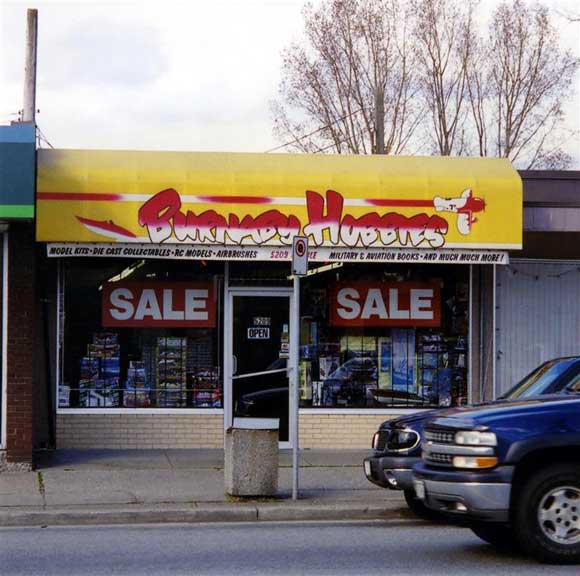
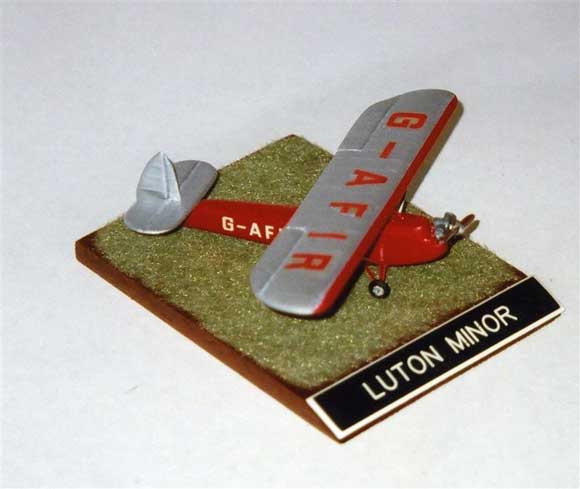
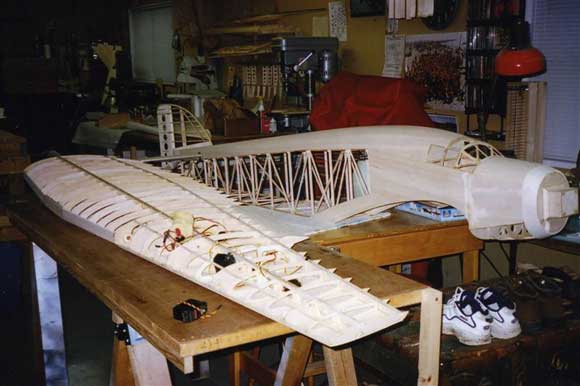
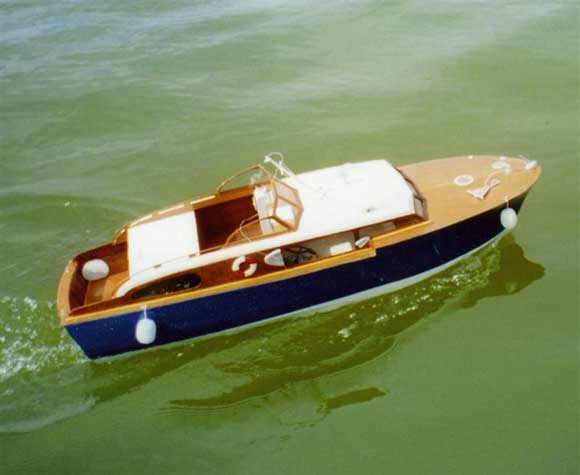



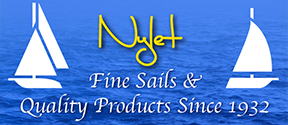






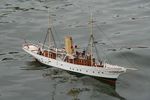
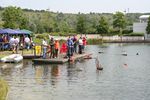

 Register
Register Log-in
Log-in



